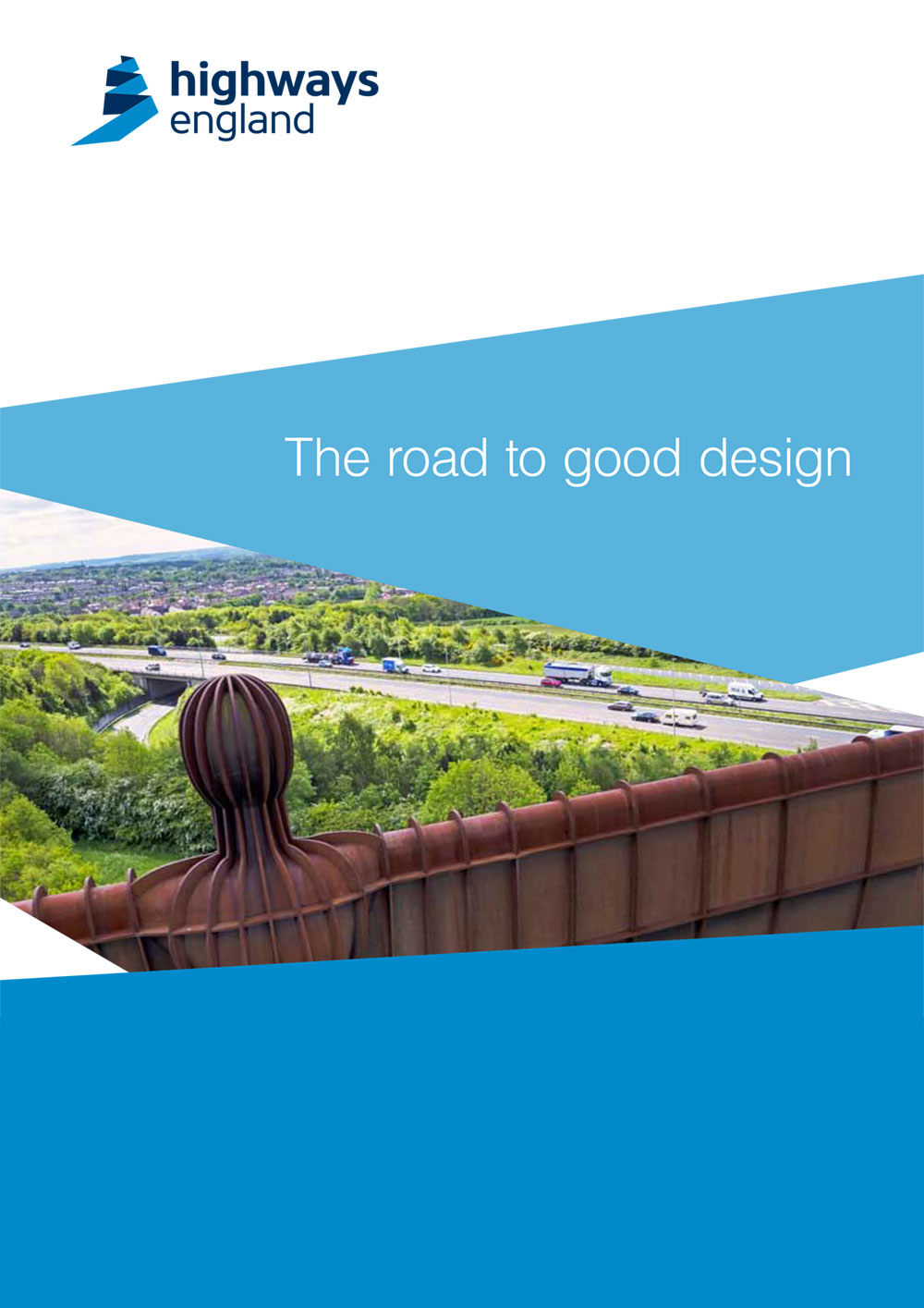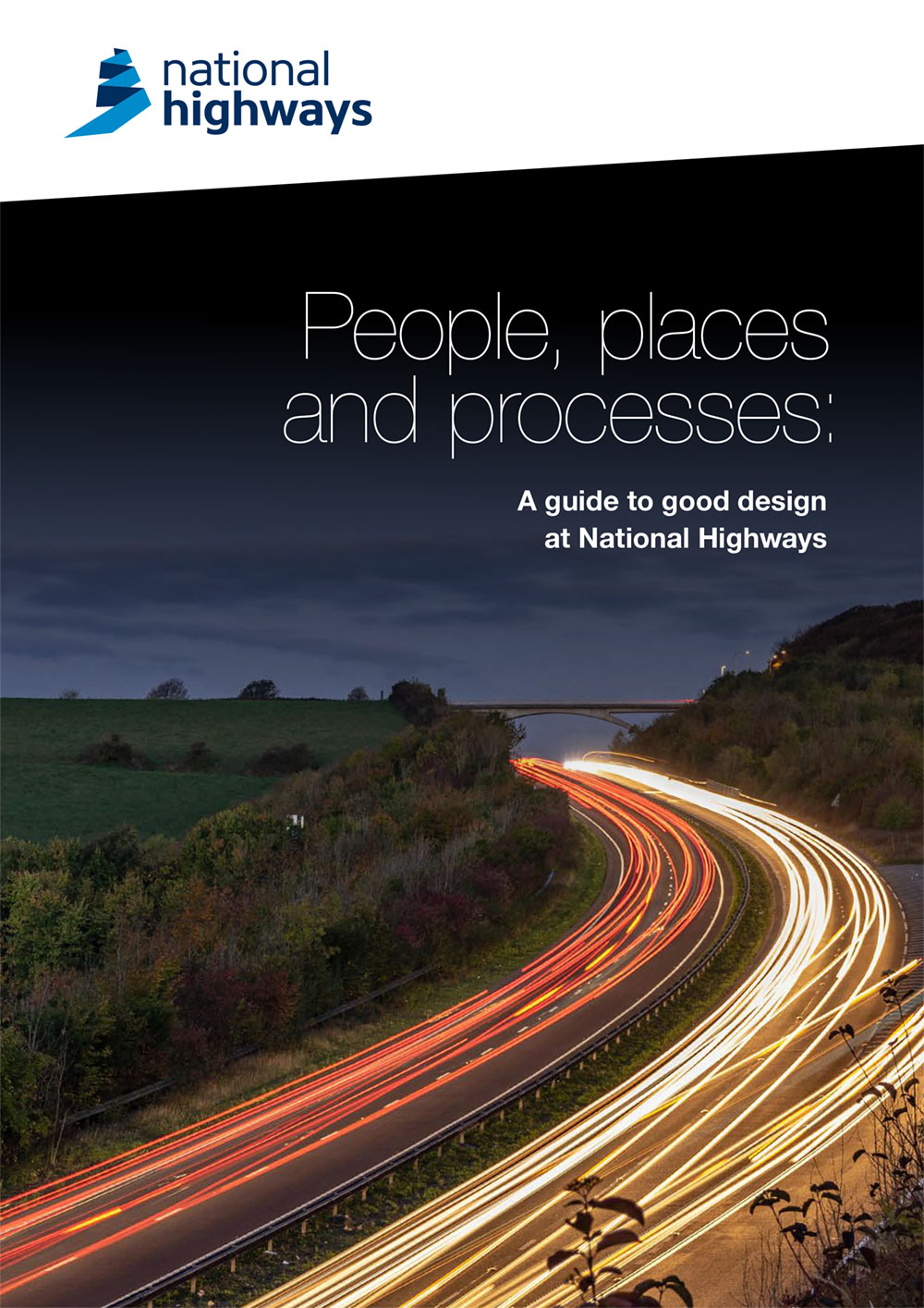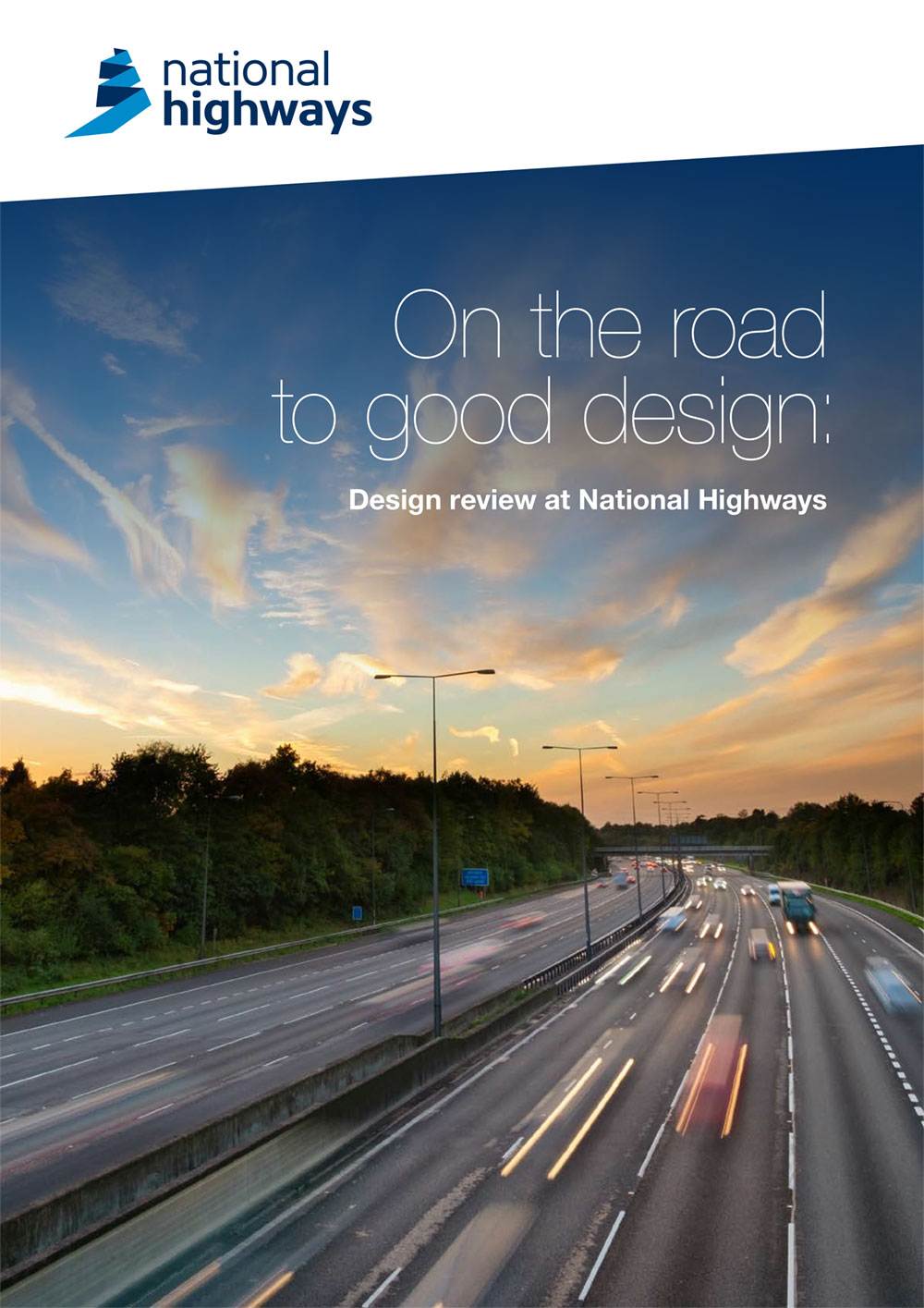In launching this open architectural design competition in early December 2022, National Highways was seeking concepts for the aesthetic enhancement of highway gantry structures.
1. Introduction
The competition sought to discover a more streamlined, elegant, and consistent visual appearance for roadside gantries to enhance the public’s experience when driving on the National Highways network. Existing designs tend to be heavily engineered, and with an emphasis on function over form, can result in visually intrusive structures that are not overly sympathetic to their settings. The challenge was to create innovative structures that can accommodate the existing signage and equipment to work sympathetically in roadside environments – whether they form part of a landscape that is urban, residential or an area of natural beauty.
The single-stage design competition was open to architect-led teams based within the United Kingdom and Europe. The participation of individuals and teams with experience of designing gantry structures and working alongside structural engineers (with whom the winning design will be developed post-competition into new standardised design solutions) was encouraged.
The original competition website has been modified to serve as an online gallery resource and showcase the thirty-one (x31) eligible entries submitted to the Gantries for National Highways Competition. For full details of the selection process, conditions of participation etc., reference should be made to the PDF version of the Competition Brief.
The submissions were appraised anonymously by a Judging Panel which consisted of built environment professionals and Executive Director level representatives from National Highways. In appraising the submissions, the Panel looked for convincing ways of achieving the challenging mission set by the Competition Brief, in which the new gantry forms will serve as a beacon of good design, place, sustainability and enhance users experience of the strategic road network. Panel members sought creative proposals that demonstrated a good understanding of the project challenge, which with future design work, had the potential to be developed into a realisable suite of gantry structures. There were a number of recurrent themes which included submissions closely based on existing gantries, solid or perforated cladding around truss forms, ‘hockey stick’ structures that unify vertical and horizontal elements, mast and suspended cable stay arrangements, modular kit-of-parts approaches, timber primary structures, arrays of digital screens, green walls and wildlife habitats, pollution absorbing technologies and even sculptural additions.
The A2 design sheets submitted by the overall Winner – the entrant judged to have submitted the best response to the design challenge – are featured on this on-line gallery. Representative publicity images are shown for each of the remaining competition submissions. This includes the scheme that attracted the second highest overall score that was identified as the runner-up, together with three submissions that were commended by the Judging Panel for specific elements of the thematic ideas presented and their challenge to the project brief.
Gantry
Types of
The current standardised Cantilever Gantry
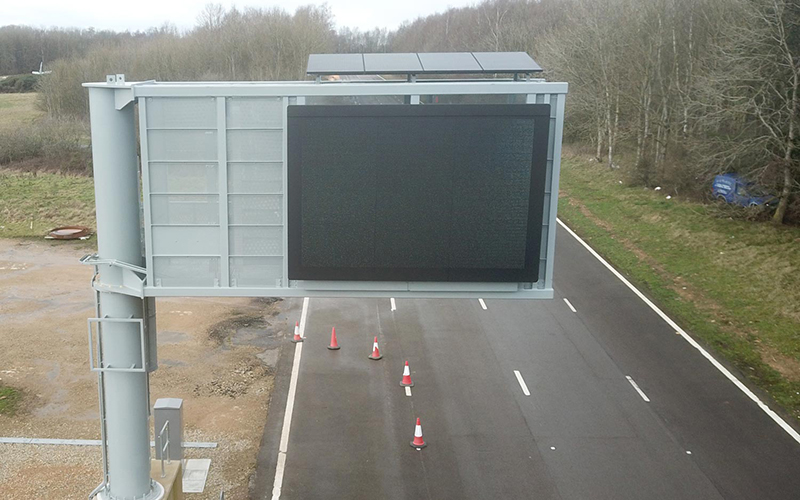 The current standardised Cantilever Gantry
The current standardised Cantilever Gantry
Super-span Cantilever Gantry
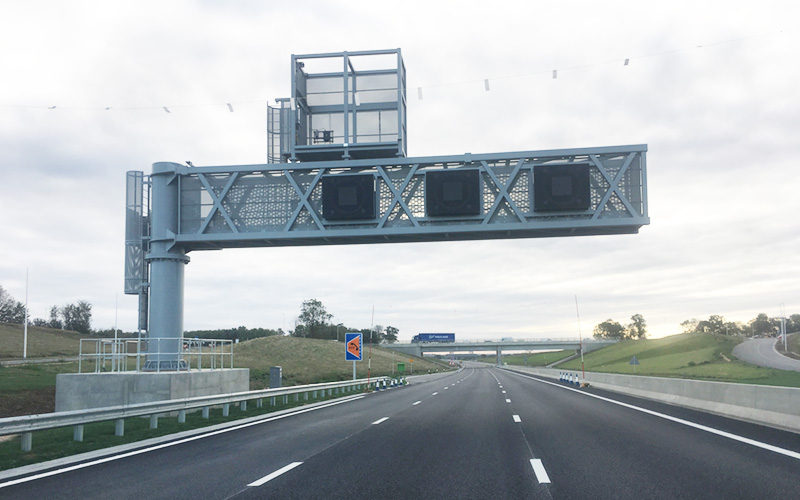 Super-span Cantilever Gantry (during A14 construction)
Super-span Cantilever Gantry (during A14 construction)
Portal Gantry
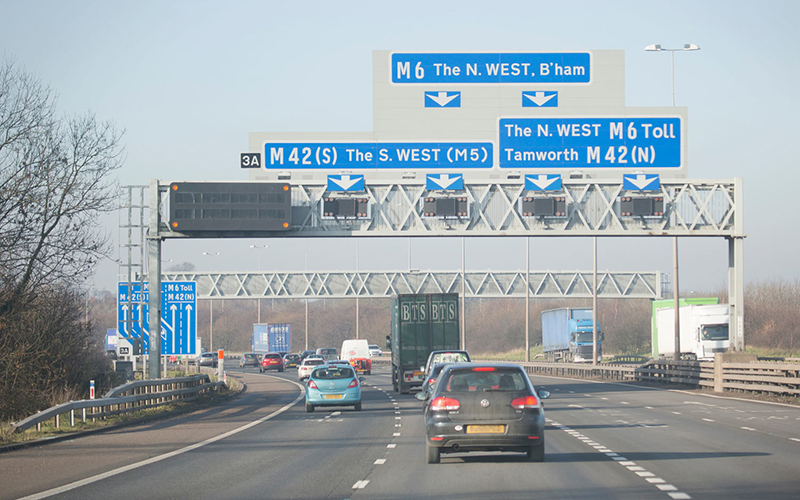 Portal Gantry
Portal Gantry
Super-span Portal Gantry
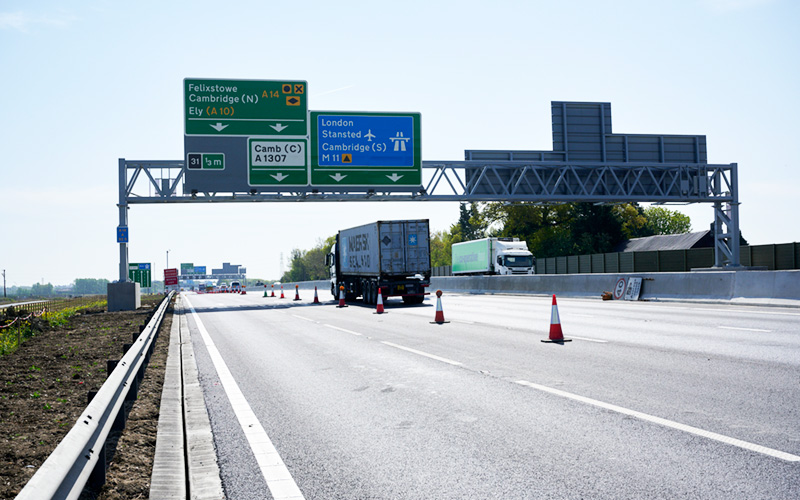 Super-span Portal Gantry
Super-span Portal Gantry
Background
2.
National Highways is a UK Government owned body responsible for operating, maintaining and improving England’s motorways and major A-roads, the Strategic Road Network. Its network covers over 4,300 miles of road and associated roadside infrastructure and, as one of England’s largest landowners, has a strong focus on sustainability and the visual impact on the local environment. This network includes a varied and complex range of assets, responsibility for which covers maintenance, renewal and new build. In addition, National Highways has a number of performance goals, which are wide ranging, but includes enhancing public experience and environmental outcomes.
It has in place commitments to apply principles of good design in response to the need to improve delivery and operation across the network. It is looking at good design to provide innovative and effective ways of delivering safer and reliable journeys in ways that improve end user satisfaction and environmental benefits.
The aesthetics of road and the roadside structures are central to the experience of the public and its operation and are being increasingly considered in design review panels where the appearance and impact are included in assessments alongside fit and function. Any design should align with the ethos set out in National Highways the road to good design. This guide sets out 10 principles and whilst all are important, for this competition, the key principles are:
- fits into context: good road design demonstrates sensitivity to the landscape, heritage and local community
- understandable: ‘self-explaining roads’ focus on the essentials and eliminate unnecessary and confusing clutter
- environmentally sustainable: multi-functional, resilient and sustainable, good roads achieve net environmental gain.

